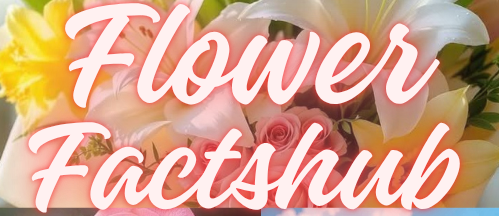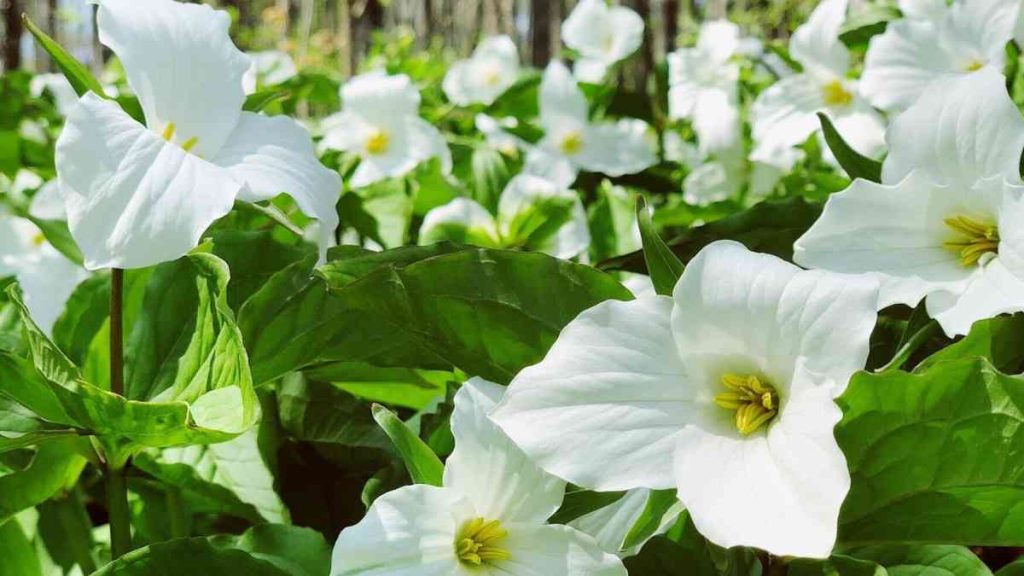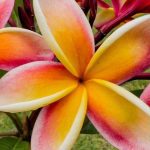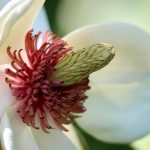Few wildflowers capture the quiet strength of nature like the Trillium Flowers. With its three delicate petals cradled atop a single stem, this perennial bloom is more than just a woodland beauty it’s a living emblem of resilience and healing. Often found in the dappled shade of deep forests, Trilliums Flowers emerge each spring as if whispering a promise: even after the harshest winters, life returns.
I’ll never forget the first time I stumbled upon a cluster of white Trilliums during an early morning hike. The way they stood so gracefully, undisturbed by the world around them, made me pause. Native American herbalists revered this plant not just for its medicinal roots, but for its spiritual significance a reminder that healing often comes from the quietest places. Whether it’s the soothing balm made from its roots or the simple peace it brings to those who find it, the Trillium is proof that nature’s most powerful gifts are often the gentlest.
Three-Petaled Elegance in Nature’s Quiet Corners
There’s something almost mystical about the way a Trillium flower unfolds its three pristine petals each one perfectly symmetrical, as if painted by nature’s most patient hand. Unlike showy garden blooms that clamor for attention, the Trillium carries a quiet dignity. Its triad of petals (accompanied by three sepals and leaves) gives it a geometric perfection, earning it nicknames like “Trinity Flower” in some traditions.
These blooms don’t just grow anywhere they thrive in the hushed, shaded woodlands, where sunlight filters softly through towering oaks and maples. I’ve often found them nestled in moist, humus-rich soil, their roots intertwined with decaying leaves, a testament to nature’s cycle of life and decay. In North America, they’re most abundant in the Appalachian forests, though some species grace the Pacific Northwest and even parts of Asia. Spotting one feels like uncovering a secret; they don’t just grow in the wild they belong to it.
Finding Trillium in the Forest
I still remember the spring morning when I first truly saw a Trillium. It was in the Blue Ridge Mountains, just after a soft rain the kind that leaves the air smelling like damp earth and possibility. I wasn’t even looking for them; I’d been hiking uphill, my boots slipping on wet leaves, when a flash of luminous white caught my eye. There, beneath a canopy of poplars, stood a small colony of Trillium grandiflorum, their petals glistening with raindrops.
What struck me wasn’t just their beauty, but their quiet defiance. These weren’t flowers that shouted for attention. They’d pushed through layers of leaf litter, waited through frosts, and timed their bloom precisely to the forest’s rhythm. Kneeling to get closer, I noticed how the petals curved like cupped hands, holding a single bead of water as if offering it to the world. That’s when I understood why so many cultures consider them sacred. In a life that often feels rushed, the Trillium Flowers is a living pause button a reminder that some of the deepest magic grows where we slow down enough to notice.
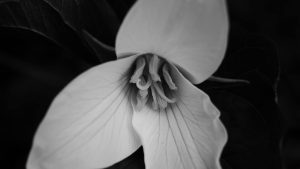
Beauty of Trillium Flowers
The Trillium’s visual poetry begins with its triad of petals that form a perfect natural mandala. While the classic pure white Trillium grandiflorum seems to glow in dim forest light, other varieties stun with deep wine-red. Some species even undergo a magical transformation – the white petals of T. grandiflorum gradually blush pink as they age, as if the flower itself is blushing at the attention.
Folk Names Whispering Through Time
These blossoms earned the name “Wood Lily” for their elegant, lily-like appearance amidst the trees. The curious moniker “Wake Robin” comes from their early spring arrival, coinciding with the return of robins – nature’s way of signaling winter’s end. In Appalachian folklore, some called them “Birthroot”, referencing their traditional use in childbirth. These names aren’t just labels – they’re living fragments of history, each telling a story about how different cultures interacted with this remarkable plant.
Fleeting Magic of Spring’s Ephemeral
The Trillium’s bloom period is heartbreakingly brief – typically just 2-3 weeks in early to mid-spring. This ephemeral nature makes each encounter feel like a secret gift. The plant’s entire lifecycle is a lesson in patience: some species take up to 7 years to flower from seed, and individual plants may live for decades. I’ve learned to visit my favorite Trillium Flowers patches with the reverence of a pilgrim – one missed week and you might wait another year. Their transient beauty reminds us that the most precious things in life often appear briefly, asking only that we be present enough to notice.
The Sacred and the Forbidden
Some legends carry warnings. In Appalachian folklore, picking a Trillium Flowers was said to invite thunderstorms a clever cultural safeguard to protect these slow-growing plants. European settlers adapted this belief, claiming the flower could curse those who plucked it with seven years of bad luck. There’s truth hidden in the superstition: many Trillium Flowers species take 5-7 years to recover from disturbance. I’ve witnessed hikers instinctively pull back their hands upon spotting one, as if the old stories still echo in our bones.
Modern Myths and Lost Wisdom
Today, the Trillium’s legacy endures in surprising ways. Ontario adopted the white Trillium Flowers as its provincial emblem, though few realize its roots (literally) in Anishinaabe medicine. In Japan, the similar Trillium Flowers tschonoskii is called “mizu-bashō” and appears in haiku as a symbol of transience. Yet as we’ve forgotten the old stories, we’ve also lost the caution they carried: several Trillium species are now threatened by habitat loss. Perhaps the flower’s greatest modern legend is its silent question will we protect what remains before it exists only in tales?
Where to Find Trillium Flowers : A Seeker’s Guide to Nature’s Hidden Treasure
The Dappled Sanctuaries They Call Home
Trilliums Flowers reveal themselves only to those who know where to look deep in deciduous forests where sunlight filters through newborn spring leaves like stained glass. These wildflowers favor north-facing slopes and ravines with rich, moist soil, often growing near companions like mayapples, bloodroot, and ferns. In my years of tracking them, I’ve found the most spectacular displays in:
- The Smoky Mountains
- Pacific Northwest rainforests
- Canadian shield woodlands
- The Art of Ethical Discovery
Finding Trilliums requires more than GPS coordinates it demands forest literacy. I teach seekers to:
- Follow the water– They cluster near seasonal streams where soil stays damp
- Time it right– Peak bloom lasts just 10-14 days (typically April-May, varying by latitude)
- Look low and slow– Their mottled leaves camouflage perfectly with sun-dappled leaf litter
A Global Shortage Worth Protecting
While most thrive in eastern North America, some species grace Asia (T. tschonoskii in Japan’s alpine zones) and even Europe (T. cernuum in Scandinavian woods). But here’s the bittersweet truth many historic Trillium Flowers on grounds have disappeared. A woodland I documented in Ohio’s Hocking Hills lost 80% of its population to illegal digging in just five years. That’s why I now share locations only as “Wise County, Virginia” rather than precise trail markers some wonders must stay semi-secret to survive.
Growing Trillium at Home: A Test of Patience and Devotion
Why Trilliums Challenge Typical Gardening
Unlike showy annuals that bloom obediently, Trilliums demand a long-term commitment they’re essentially forest philosophers in plant form. Having cultivated them for 15 years, I can confirm what botanical gardens won’t admit: most homegrown Trilliums perish within 3 seasons. Their survival depends on replicating specific mycorrhizal partnerships that develop over decades in undisturbed woodland soils.
The Painstaking Process (If You Must Try)
For those undeterred, here’s the hard-won wisdom I’ve gathered:
- Source ethically– Buy only nursery-propagated rhizomes (never wild-dug) from specialists like Plant Delights Nursery
- Recreate forest conditions– Mix 50% decayed oak leaves with 30% peat and 20% perlite
- Master the light dance– Dappled shade (70-80%) under deciduous trees is ideal
- Water like the forest– Maintain even moisture without waterlogging (think “a wrung-out sponge”)
The Bitter Truth About Success
In my shaded propagation beds, only 1 in 20 Trillium seeds germinated after 18 months of cold stratification and those that did required 7 years to flower. A colleague at the New England Wild Flower Society puts it bluntly: “You’re not growing Trilliums; you’re custodying a slice of forest ecology.” The plants that thrived best in my care were those planted with undisturbed soil plugs taken (legally) from construction sites where native woods were being destroyed.
Trillium FAQs: Answering Your Wildflower Curiosities
1. Can I pick or transplant wild Trilliums?
Absolutely not. Most Trillium species are protected by law in their native habitats, and for good reason. Their roots depend on specific fungal networks that can’t be replicated when moved. Even picking the flowers can kill the entire plant, as it depletes energy needed for next year’s growth.
2. Why do some Trilliums smell like rotting meat?
The red-flowered species (like T. erectum) evolved to attract fly pollinators with their carrion-like scent. It’s nature’s dark humor a beautiful flower that smells like death! The white varieties typically have no scent or a faint, sweet aroma.
3. How long do Trilliums live?
With ideal conditions, some Trillium grandiflorum individuals may survive 70+ years, growing slowly into massive clumps. However, they’re extremely sensitive to environmental changes a single season of drought or soil compaction can wipe out decades-old plants.
4. Are Trilliums poisonous or medicinal?
Both. While some Native American tribes used carefully prepared Trillium root tea for childbirth and inflammation, modern herbalists warn against casual use. All parts contain potent saponins that can cause nausea. Never consume without expert guidance.
5. Why do I never see Trillium seeds for sale?
Their seeds have double dormancy they require:
- 18 months of cold stratification
- Specific fungal partners to germinate
- 5-7 years to reach flowering size
Most commercial growers find them economically unviable. Your best bet is specialty native plant nurseries.
6. What’s the difference between Trillium and Trientalis (Starflower)?
While both have floral symmetry, Trilliums have:
- Three leaves (Trientalis has 5-9)
- Single large flowers(Trientalis has delicate star-shaped clusters)
- Fleshy rhizomes(Trientalis has thin roots)
7. How can I help protect wild Trillium populations?
- Stay on trails to avoid compacting their fragile soil
- Report poachers digging plants (a felony in many states)
- Support land trusts preserving old-growth forests
- Plant native alternatives like Solomon’s Seal or Wild Ginger
